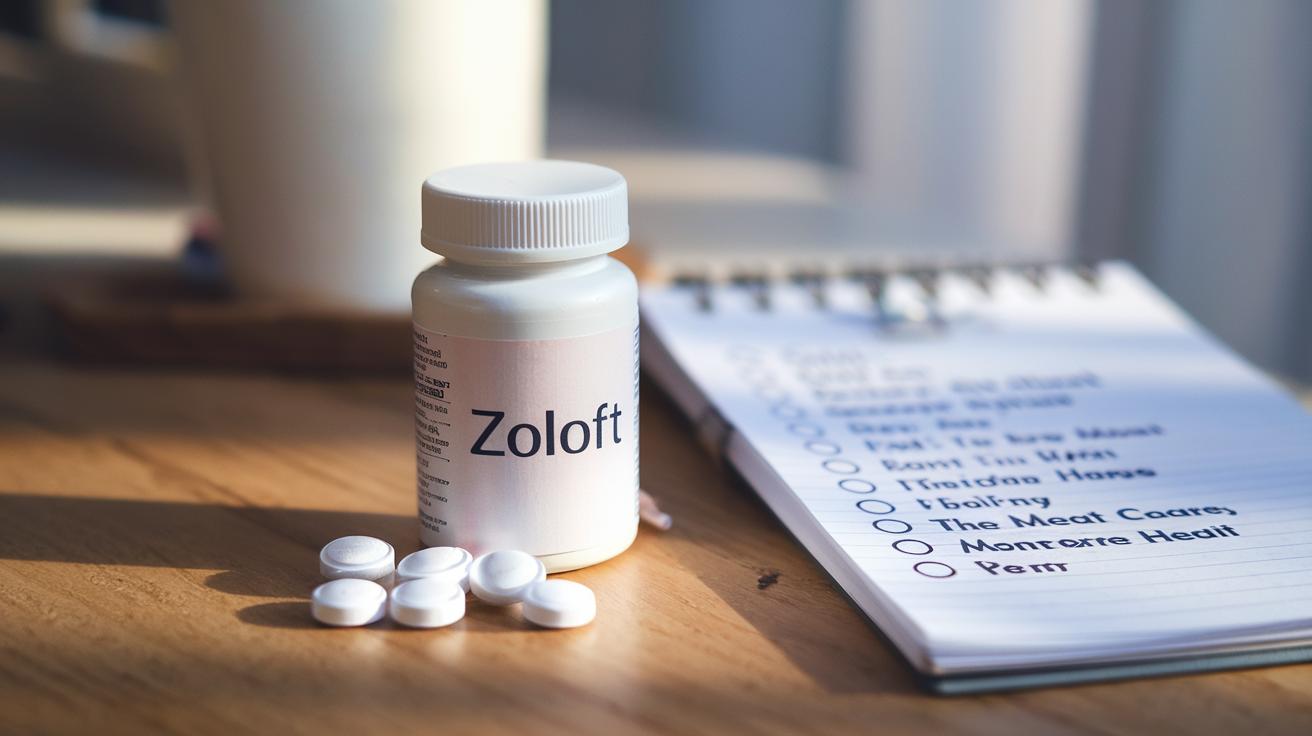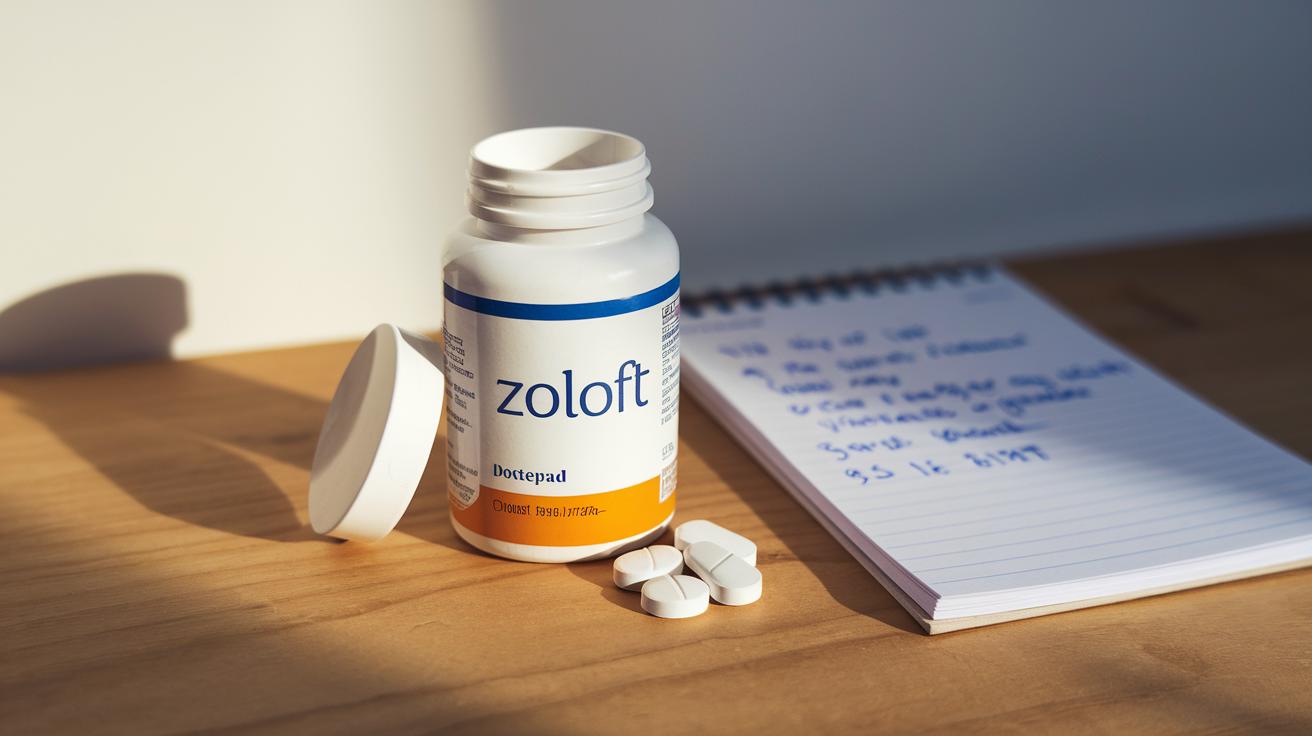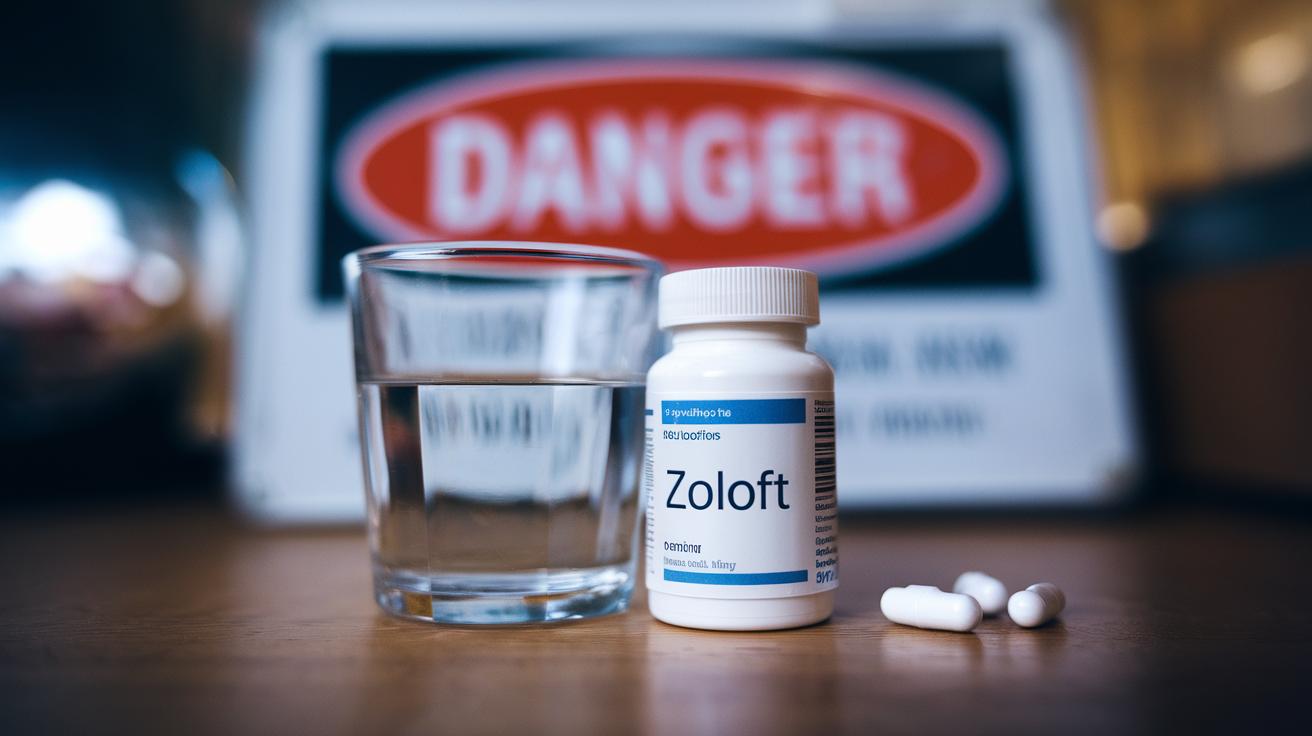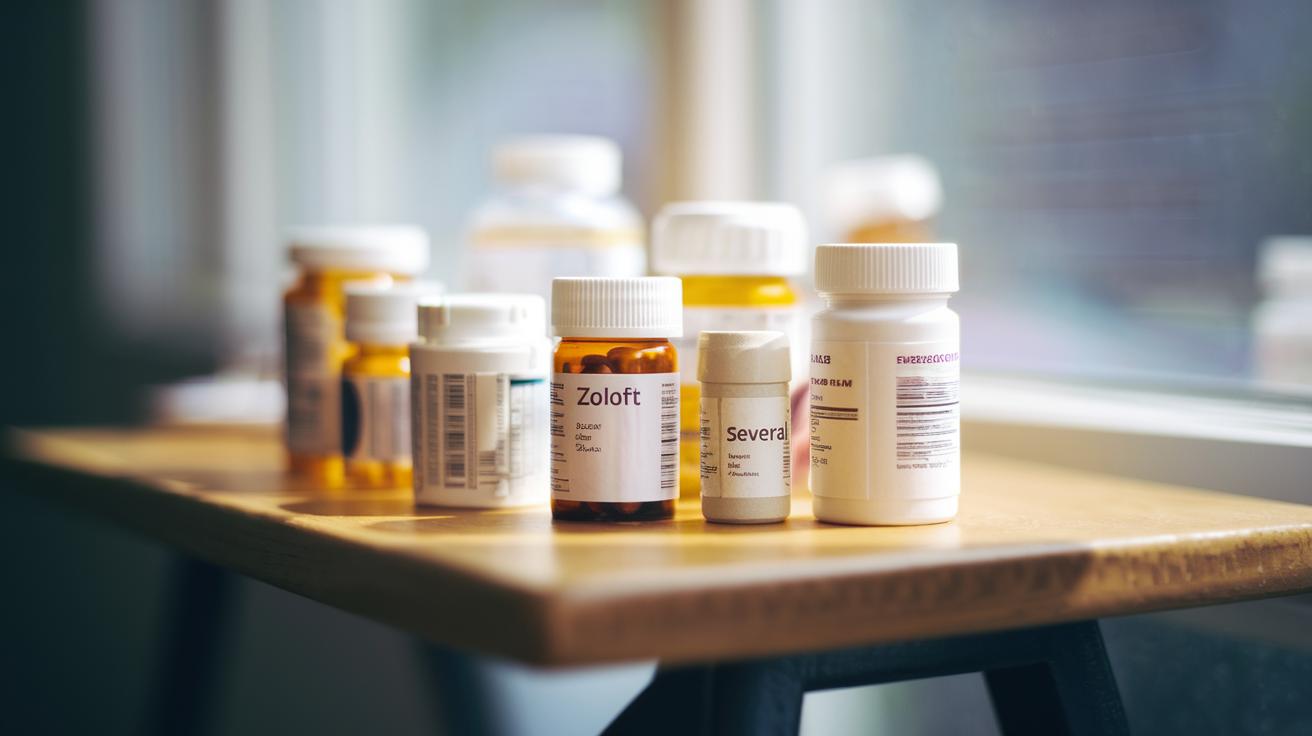Is Zoloft the key to unraveling the complexities of mental health treatment? This widely prescribed medication, known by its generic name sertraline, belongs to the selective serotonin reuptake inhibitor (SSRI) class. Serving as a cornerstone in the treatment of mood disorders such as depression, anxiety, and PTSD, Zoloft aims to improve emotional state by enhancing serotonin levels in the brain. This overview will explore the classification, purpose, and application of Zoloft, offering insights into how it impacts mental health conditions and its regulatory approval status by the FDA.
Understanding Zoloft: An Overview

Zoloft, known generically as sertraline, is a frequently prescribed medication within the realm of antidepressant treatments. It belongs to the selective serotonin reuptake inhibitor (SSRI) drug class, which is widely recognized for its role in addressing mental and mood disorders. SSRIs such as Zoloft function by enhancing the levels of serotonin in the brain, thereby aiding in mood improvement. This medication is often utilized in clinical settings to manage various mental health conditions and is available exclusively through a prescription.
- Major Depressive Disorder (MDD)
- Panic Disorder
- Post-Traumatic Stress Disorder (PTSD)
- Obsessive-Compulsive Disorder (OCD)
- Social Anxiety Disorder
The effectiveness of Zoloft in treating these conditions is attributed to its action on neurotransmitters. By selectively inhibiting the reuptake of serotonin, Zoloft facilitates increased availability of this neurotransmitter in the synaptic cleft, thereby promoting enhanced communication between nerve cells in the brain. This mechanism underpins its therapeutic benefits across a broad spectrum of mental health disorders. Zoloft's efficacy and safety profile are supported by its FDA approval for numerous conditions, reinforcing its status as a vital component of contemporary psychiatric treatment strategies.
How to Use Zoloft Safely

Zoloft administration follows a structured dosing regimen designed to maximize therapeutic benefits while minimizing potential side effects. Typically prescribed in oral tablet form, it is taken once daily. The initial approach to dosing Zoloft adheres to a "start slow and go slow" philosophy, which involves beginning with a starting dose of 50 mg. This cautious method allows patients to acclimate to the medication and enables clinicians to observe any side effects or therapeutic responses before considering dose adjustments. Patients should consistently take Zoloft at the same time each day, either in the morning or evening, to maintain stable drug levels in the bloodstream.
- Major Depressive Disorder (MDD): Starting dose of 50 mg daily, potentially increasing to a maximum of 200 mg.
- Panic Disorder: Initiation at 25 mg daily, with a gradual increase to 50 mg after the first week.
- Obsessive-Compulsive Disorder (OCD): Starting dose of 50 mg daily, with potential increments up to 200 mg.
- Post-Traumatic Stress Disorder (PTSD): Initial dose of 25 mg, increasing to 50 mg after one week, with further adjustments as needed.
Adhering to prescribed instructions is crucial when taking Zoloft, particularly concerning missed doses. If a dose is missed, the patient should take it as soon as they remember. However, if it is close to the time for the next dose, it is advisable to skip the missed dose to avoid doubling. Consistently following dosing guidelines ensures the effectiveness of the treatment while minimizing the risk of adverse effects. Patients are encouraged to maintain open communication with their healthcare provider to address any concerns or changes in their condition during the course of treatment.
Zoloft's Side Effects and Management

Common side effects of Zoloft manifest as physiological and psychological responses, with varying degrees of intensity. Patients often report experiencing nausea, dizziness, sleepiness, and sexual dysfunction. Other side effects may include dry mouth and insomnia. These effects typically emerge during the initial stages of treatment as the body adjusts to the medication. While most side effects are mild and transient, serious adverse reactions, though rare, necessitate immediate medical consultation. Such reactions may include severe allergic responses or symptoms indicative of serotonin syndrome, characterized by high fever, agitation, and muscle rigidity.
- Nausea
- Dizziness
- Sleepiness
- Sexual problems
- Insomnia
The Food and Drug Administration (FDA) has issued a boxed warning for Zoloft, particularly concerning its use in young adults. This warning highlights the increased risk of suicidal thoughts and behaviors, especially during the initial treatment phases or when dosages are adjusted. To mitigate these risks, healthcare providers are advised to closely monitor patients for any signs of worsening depression or emergent suicidal ideation. This level of vigilance is crucial to ensure patient safety and to facilitate timely intervention if adverse symptoms arise.
Management of side effects associated with Zoloft requires a comprehensive approach, tailored to the individual's response to the medication. Patients should maintain open communication with their healthcare providers, reporting any persistent or bothersome side effects. Adjustments to the dosage or timing of medication intake may alleviate some adverse effects. Incorporating lifestyle modifications, such as maintaining a balanced diet, ensuring adequate hydration, and establishing a regular sleep schedule, can further support the management of side effects, promoting overall well-being during treatment.
Interactions and Precautions with Zoloft

Zoloft's interaction with other drugs is a critical consideration to ensure patient safety. Zoloft should not be taken with monoamine oxidase inhibitors (MAOIs), as the concurrent use increases the risk of serotonin syndrome, a potentially life-threatening condition. Serotonin syndrome is characterized by symptoms such as high fever, agitation, confusion, and muscle stiffness. Additionally, Zoloft may interact with other medications, herbs, and supplements, altering its effectiveness or causing harmful effects. Alcohol consumption while on Zoloft can exacerbate side effects like nausea and dizziness, impairing cognitive and motor functions. Therefore, patients are advised to exercise caution regarding any substances they consume while on this medication.
- Monoamine oxidase inhibitors (MAOIs)
- Alcohol
- Pimozide (Orap)
Open communication with healthcare providers is paramount when taking Zoloft. Patients must inform their doctors of all medications, supplements, and herbal products they are using to prevent adverse interactions. This precautionary measure helps healthcare professionals make informed decisions about treatment plans, ensuring the safe and effective use of Zoloft. Discussing potential interactions and safety precautions allows for the identification of any contraindications, enabling timely adjustments to the therapeutic regimen if necessary. By maintaining transparent communication, patients can better manage their treatment and reduce the risk of complications associated with drug interactions.
Comparing Zoloft to Similar Medications

Zoloft, generically known as sertraline, is a widely prescribed antidepressant available in both brand-name and generic forms. The generic version offers a cost-effective alternative, making it accessible to a broader population. As a selective serotonin reuptake inhibitor (SSRI), it is used to treat a variety of mental health disorders, including depression, anxiety, and obsessive-compulsive disorder. The availability of sertraline in generic form provides significant savings for patients, contributing to its widespread use in clinical practice.
When evaluating Zoloft's efficacy compared to other antidepressants, it is recognized for its effectiveness across a broad spectrum of conditions. SSRIs like Zoloft are generally well-tolerated and often preferred for their favorable side effect profiles. However, individual responses to treatment can vary, with some patients experiencing better outcomes with different medications. While Zoloft shares similarities with other SSRIs, such as Prozac (fluoxetine) and Lexapro (escitalopram), its specific pharmacological properties may make it a more suitable choice for certain individuals based on their unique symptoms and treatment history. Thus, selecting the most appropriate medication involves considering both the clinical presentation and patient preferences.
Final Words
Understanding what Zoloft is, its classification as an SSRI, and its applications in mental health treatment illustrates its crucial role in managing various conditions like depression and PTSD. When using Zoloft, adherence to prescribed dosages and recognizing potential side effects maximizes benefits and minimizes risks. Moreover, being aware of interactions with other substances reinforces safe usage. Zoloft's availability in generic form offers an affordable option, with comparable efficacy to similar antidepressants. Overall, Zoloft continues to be a valuable medication, supporting individuals in their mental health journeys effectively and safely.
FAQ
Q: What are the side effects of Zoloft?
A: Zoloft side effects, common and needs management. Nausea, dizziness, sleep disturbances, and sexual dysfunction frequent. Serious ones are rare but consult a doctor. Monitor mood changes and report suicidal thoughts.
Q: When is the best time to take Zoloft for anxiety?
A: Zoloft is usually taken once daily, prescribed timing varies. Morning or evening suited based on individual response and side effects experienced, such as sleep disturbances.
Q: Are there any specific side effects of Zoloft in women?
A: Women taking Zoloft may experience similar side effects, including nausea and dizziness. Hormonal changes could impact feeling; consult a physician if new or worsening symptoms arise.
Q: What is the typical dosage range for Zoloft?
A: Zoloft dosage varies: Typical starting dose is 50 mg daily. Adjustments depend on condition and response. Available in 25 mg, 50 mg, and 100 mg oral tablets. Professional guidance crucial.
Q: What is Sertraline 50mg used for?
A: Sertraline 50mg is prescribed for depression, anxiety disorders, OCD, PTSD, and PMDD. Starting dose, typically tailored for effective serotonin level targeting to alleviate symptoms.
Q: What are contraindications for taking Sertraline?
A: Sertraline contraindicated with monoamine oxidase inhibitors (MAOIs) and pimozide. Risk of serotonin syndrome; disclose all medications and health conditions to a physician before starting.
Q: How does a 100mg dosage of Sertraline compare?
A: 100mg Sertraline often prescribed for severe cases or when 50mg is inadequate. Higher dose heightens potential side effects. Regular monitoring and gradual dosage increments advised.
Q: What effects does Zoloft have on a person?
A: Zoloft increases serotonin levels in the brain, enhancing mood and alleviating symptoms related to depression, anxiety, and other mental health conditions. Potential side effects may accompany benefits.
Q: Are Zoloft and Xanax the same thing?
A: Zoloft and Xanax are not the same. Zoloft (sertraline) is an SSRI antidepressant addressing mood disorders. Xanax is a benzodiazepine, used primarily for acute anxiety and panic attack relief.
Q: What is Zoloft most commonly used for?
A: Zoloft, an SSRI, treats depression, anxiety disorders, OCD, PTSD, and PMDD. It enhances serotonin activity in the brain, benefiting various mental health conditions.
Q: What is the number one side effect of Zoloft?
A: Nausea is commonly identified as the number one side effect of Zoloft. Adapting dosage timing and incorporating dietary adjustments may help mitigate this symptom.


